News 9/14/10
Affinity Health System chooses GE Centricity EMR for its 22 multi-specialty clinics. GE will host the software for Affinity’s 220 doctors.
MPM selects PracticeSuite EMR as the EMR option for its MPMsoft billing software. PracticeSuite EMR is a “free” EMR for providers, though the company charges $35/month for each non-provider. MPMsoft is also a lower-priced alternative (their Web site says a “complete billing system” is $2,998). From MPM’s owner Jim Muschetti: “Our practices don’t have millions to spend on EMR systems like Allscripts or eClinicalWorks; our clients are small and they watch their pennies. They’re reluctant to spend a dime frivolously even in the best of times.” I have no doubt there is a demand for less-expensive alternatives (although “millions” is hardly typical even on the upper end), but, I wonder how many will have the financial means to certify products.
Speaking of the cost of EMRs, we didn’t have too many participants in our poll (to the right) indicating the monthly fee for a hosted solution. However, the small sampling indicates $500 to $999 is the most popular price point.
RCM provider PracticeMax acquires eClinicalWorks reseller Medinomics. PracticeMax already offers implementation and training for NextGen and SequelMed.
Medical billing software provider Kareo says it has raised $9.5 million, which it will use to enhance customer service, expand its product offerings, and add sales, marketing, and management personnel. Kareo targets small practices and offers its software via a hosted, monthly subscription model.
Here is a legal case to watch. The California Medical Association sues Blue Shield of California, saying its online rating system is inaccurate and misleading. The site recognizes providers who meet national standards for quality care. However, the medical association alleges the ratings are based only on claims data and do not consider details from medical records.
When it comes to EMR adoption, the most likely indicator of doctors’ interest and use in EMRs is whether their friends (and not just peers) use them. That’s the conclusion of a study published in the Journal of American Informatics Association. Researchers recommend that practices train the more popular doctors to be physician champions rather than doctors who are simply techies.
The government predicts that community health centers will double their capacity by 2014 and treat 20 million additional patients.
In the retail clinic world, Target increases the capacity of its in-store clinics, adding eight new locations in Chicago and the Palm Beach, FL area.
Aprima Medical Software announces DEVsource is its newest reseller.
RadNet announces its intention to acquire Image Medical Corporation, the parent of eRAD, for $10.7 million in cash and promissory notes.
SRS partners with Medstrat to integrate its PACS system with the SRS Hybrid EMR. SRS will implement and support the new “SRS PACS, powered by Medstrat” product.
The Gulf Coast REC at the University of Texas Health Science Center at Houston opens its enrollment for eligible providers, with a goal of 2,855 primary care providers in the first year.
Drummond Group, the organization that is CCHIT’s only official certification competition, says they’ve been hit with such a high volume of questions from vendors that they’ve set up a FAQ on their site.
Amednews.com chats with a few consultants about IT and the need for regular “checkups.” Recommendations include working with a vendor that has a proven track record and having hardware and software monitored twice a year. Especially important: a working backup, up-to-date security, and current software. As one consultant points out, “Information technology is no longer just a little component of somebody’s business, that a little nerd comes by and fixes your problem and moves on.”
I am all about spicing up life with a little humor. Kronos, a developer workforce management solutions, apparently likes mixing wit with work and introduces a new weekly cartoon called “Time Well Spent.” The above reminds me of just how much of a challenge this whole EMR thing might be for the industry.


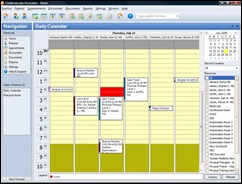

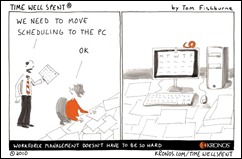



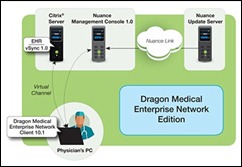
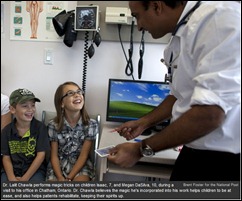


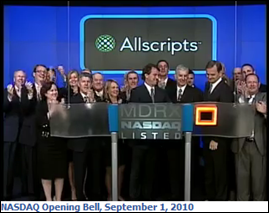



Re: Walmart Health: Just had a great dental visit this morning, which was preceded by helpful reminders from Epic, and…